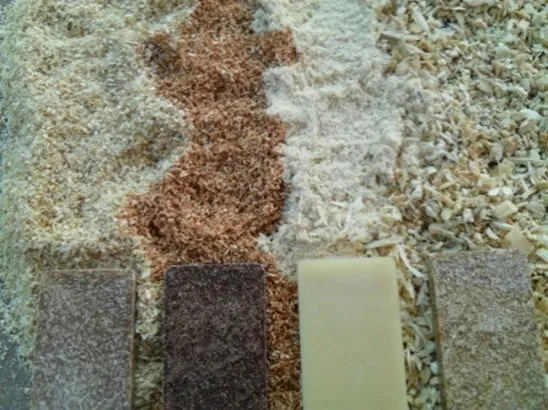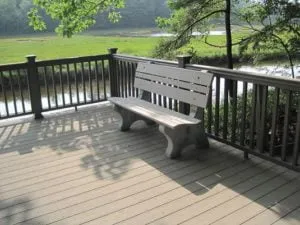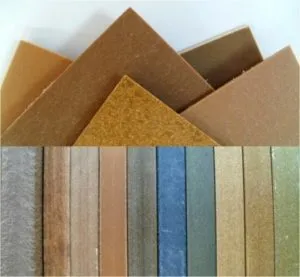WPC as an alternative material to wood

The current trend of developing environmentally friendly products leads researchers to look for alternative materials in a variety of applications. Wood Plastic Composite (WPC) is becoming popular in many sectors, particularly in construction and automotive, due to the attractive properties it presents compared to traditional materials like wood.
Composition of WPC
This type of material belongs to the family of bio-composites comprised mainly of cellulosic materials and a thermoplastic polymeric matrix, which can be virgin, recycled, or bio-based.
Generally, the polymers used for this type of composite are Polyethylene (PE), Polyvinyl chloride (PVC), and Polypropene (PP).
Regarding vegetable fibres, usually wood flours (pine, maple, oak, dried fruit husks) or fibres (rice, wheat, or hemp straw) are used. Up to 60%-70% in weight can be incorporated into the polymer and they can act as a filler or as a matrix reinforcement agent.

Figure 1. WPC profiles and fibres.
Benefits of using WPC
- WPCs are very versatile materials, which can be custom made according to the product application, acquiring specific properties.
- Cost reduction per unit of volume in WPC composites when using plant fibres, due to the low cost of the fibres and the high volume than can be incorporated in the polymer.
- Good humidity resistance, high resistance and durability in climate conditions, can therefore be used in exterior applications, without requiring specific maintenance with varnishes, paints, or oils. Having a better shelf life than products made exclusively from wood.
- Lightweight, by being able to manufacture profiles and hollow and/or foam products.
- Versatility of design, finish, and process, able to be moulded into any shape and size, including arched or bent shapes. Possibility to be treated like wood in regard to final touches like drilling, brushing, sanding, and dyeing.
- Compared to using glass fibre as reinforcement, using vegetable fibres entails a reduction in the environmental impact through a lower carbon footprint and better product recyclability.
Applications
Originally wood plastic composites were focussed on non-structural applications, mainly in the automotive and construction sectors.
- Construction: prefabricated houses, rooftops, profiles, fences, pavements, handrails.
- Automotive: car boot trays, ceiling and door panels, train interiors, busses.

At present, these areas continue to be of great interest, but they are also present in various sectors such as:
- Industrial, infrastructures: packaging, drawers, display cabinets, pallets, signposting.
- Furniture: Bins, parks, shelves, kitchen fittings, doors, windows, garden and urban furniture.
- Others: mobile phone cases, toys, bicycle frames, snowboards, musical instrument covers.
WPC in AIMPLAS
 Figure 3. AIMPLAS capacity scheme in WPC.
Figure 3. AIMPLAS capacity scheme in WPC.
AIMPLAS has extensive experience in projects with bio-composites and WPC, being able to carry out the complete process of its fabrication in their facilities, from the design of the product, optimisation of the formulation and extrusion, and injection of the composite.
They have the ability to develop it in 1 “one-step” stage, direct extrusion (with a co-rotative or counter-rotative, twin screw extruder, according to the polymer base and the profile to obtain), or in 2 stages combining the technology of compounding and extrusion/injection (single screw).
With regard to projects, AIMPLAS has conducted nationally and internationally subsidised projects and private projects with companies. Products with very varied properties have been studied and developed from auxiliary office furniture, coat hangers, interior lorry parts to profiles for outdoor use.

Marta Pérez Argilés
Construction and Renewable Energies researcher


